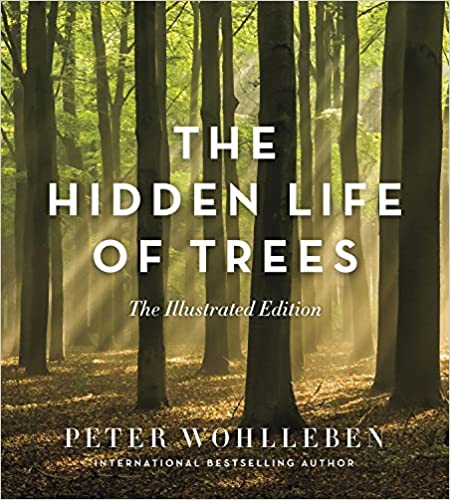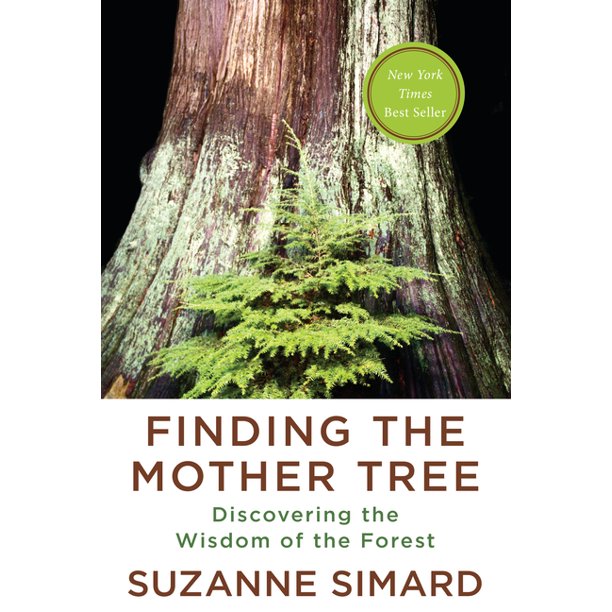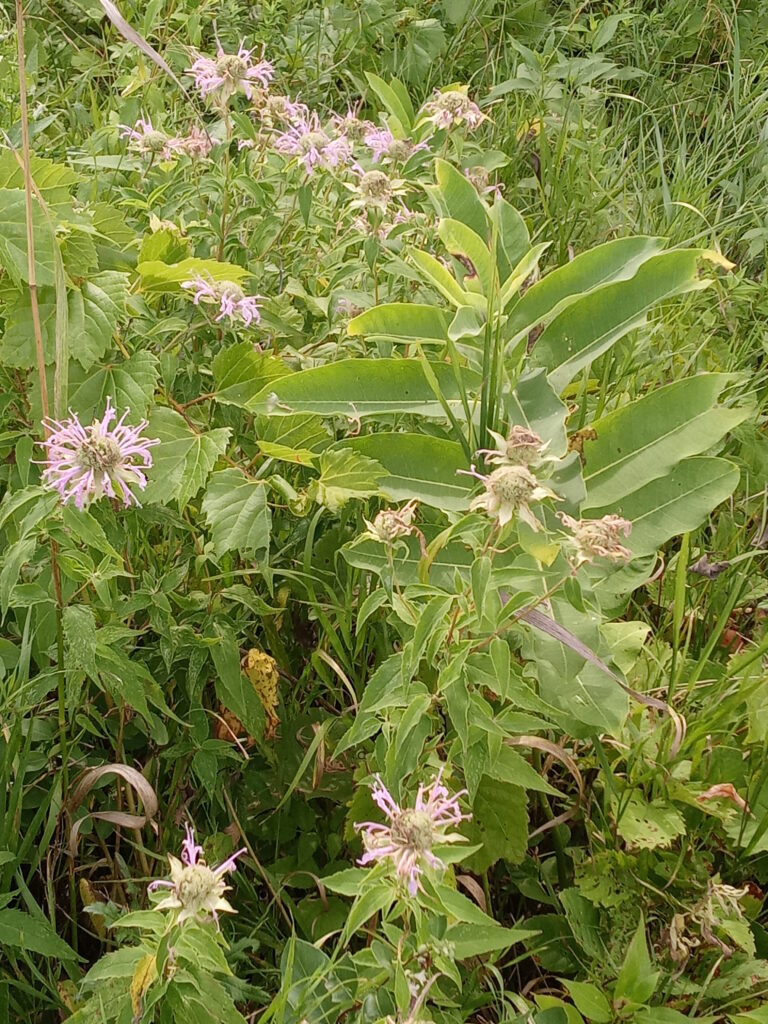Connecting with Trees
Perhaps it is a natural progression–moving from the dainty flowers to the mighty trees. I am incredibly blessed to live on a property with 15 acres of woods that we are slowly learning how to manage. Through this process I am learning about how trees help us create a life of health, beauty and connection. In this post we will talk about connecting with trees.
Trees in the News
In 2016 Peter Wohlleben published his book The Hidden Life of Trees. Wohlleben manages a forest in Germany. His book contains short vignettes that offer a look into various aspects of tree existence, but at the heart of that work is connection. The book became an International best seller and was translated into several languages.

In his book he cites the work of Suzanne Simard, a forest scientist from Canada. In 2021 Simard published her own book, Finding the Mother Tree, in which she shares with more specifics the details of her work discovering the connection among trees.

What I find particularly fascinating about Simard’s book, is it is also a biography of her life and extends back to her family/ancestors. They settled in British Columbia, in the same general region where she still lives. She draws a line of connection going back to her family, the native people and forward to a future forestry policy that she would like to be informed by her work studying natural connections in forests.

A Life of Connection
Trees epitomize a life of connection. But we didn’t know the extent until just recently. We continue to look through a “survival of the fittest” lens that says that our default (and the default of nature in general) is one of competition. This idea of always seeking what is best for us regardless of our surroundings is not the way trees actually live.
Nature as a whole it turns out is more about cooperation and connection. Below is an exerpt from the foreword of the English edition of The Hidden Life of Trees.
It all starts with wolves. Wolves disappeared from Yellowstone, the world’s first national park, in the 1920s. When they left, the entire ecosystem changed. Elk herds in the park increased their numbers and began to make quite a meal of the aspens, willows, and cottonwoods that lined the streams. Vegetation declined and animals that depended on the trees left. The wolves were absent for seventy years. When they returned, the elks’ languourous browsing days were over. As the wolf pack kept the herds on the move, browsing diminished, and the trees sprang back. The roots of cottonwoods and willows once again stabilized stream banks and slowed the flow of water. This, in turn, created space for animals such as beavers to return. These industrious builders could now find the materials they needed to construct their lodges and raise their families. The animals that depended on the riparian meadows came back, as well. The wolves turned out to be better stewards of the land than people, creating conditions that allowed the trees to grow and exert their influence on the landscape.
Peter Wohlleben, The Hidden Life of Trees

The Ecology of Connection
From the above quote we see that nature has a lot to teach us about connection.
- Connections are all around us. We simply need to look with an open and creative eye.
- Connections are often not what we think. Who would have thought that the prescence of wolves would have such a pronounced effect on streams?
- Often we are misguided in our interpretations of natural connections. Initially wolves appear to simply be a predatory animal with no cooperation necessary. But now we see that actually they are deeply connected. It is hard to have connection without cooperation.
I read somewhere that if were were to leave land alone to become what it wanted all land would choose to become a forest. The forest of connection extends from root systems to the canopy but it also includes animals and other living beings that call the forest home.
Where do we fit?
Often I feel that we take a people centered view of nature. This is only natural, after all we are people. But by actively looking for our connections with the world as well as connections that do not include us we will see that a life of health, beauty and connection is also one of simplicity. We simply need to observe, without judgement is possible.
While plants willingly offer us beneficial connections in the form of herbal remedies they offer us much more when they share their perspective.
For more information about simple steps to connect with nature check out What is Your Natural Awareness IQ?






